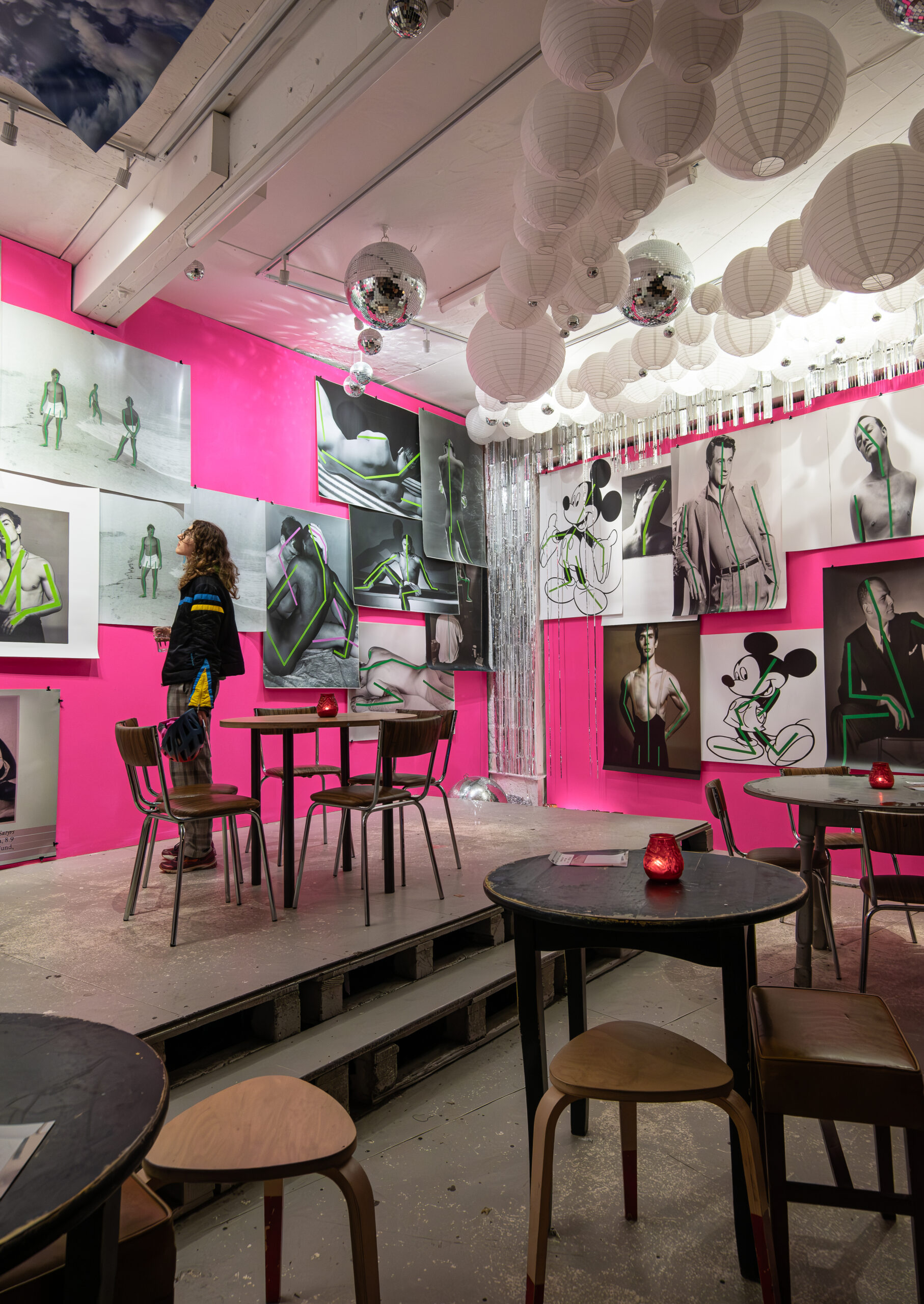Nasty Boys: An Ode to Queer Identity
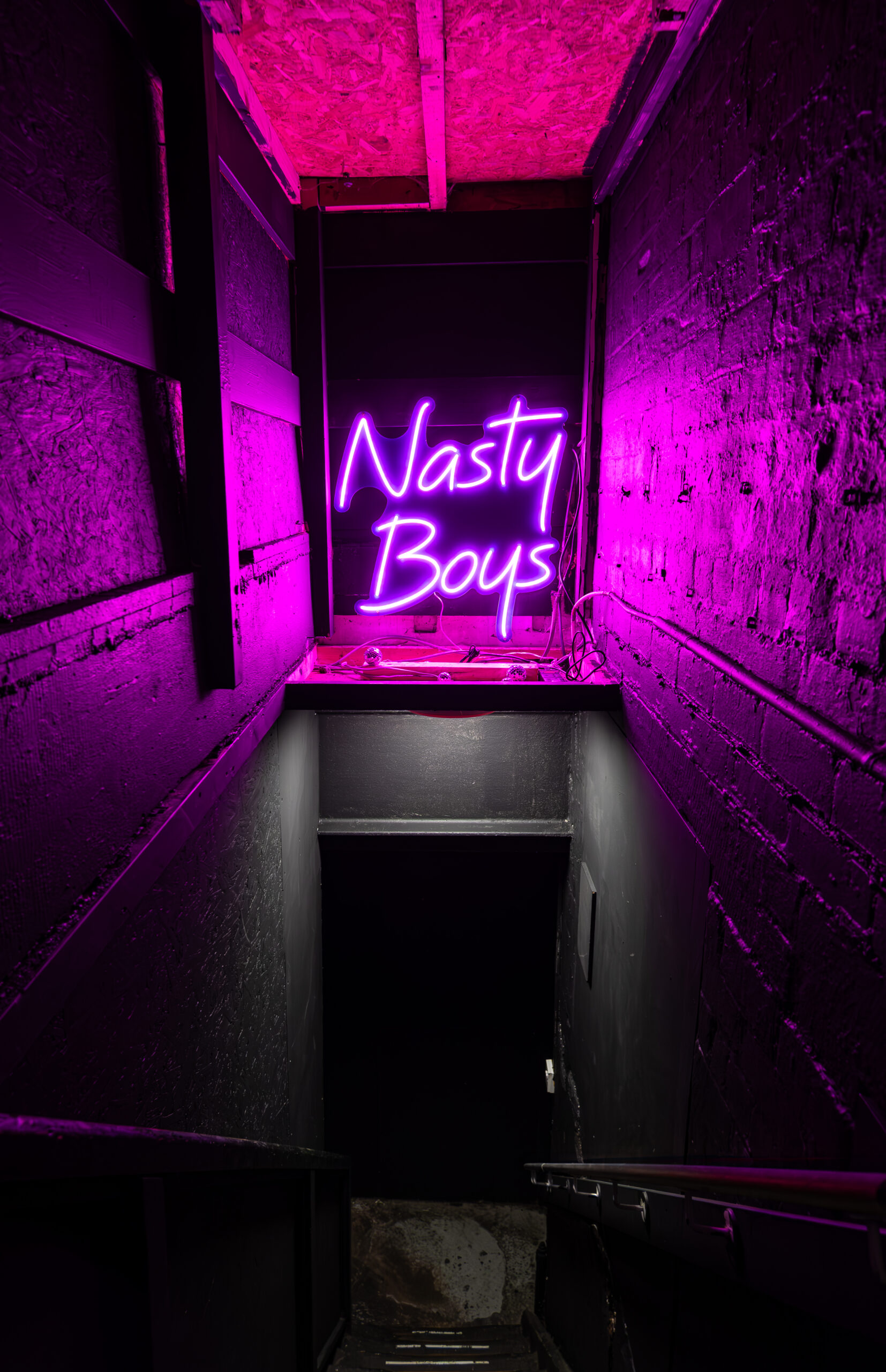
Rosie Nowosielski, having attended a preview event, gives their insight into the latest exhibition at Hyde Park Book Club – Nasty Boys. Photography has been provided by The Gryphon’s Jade Pharoah.
A bright neon green inflatable Tall Boy beckoned all to Hyde Park Book Club (HPBC) for the stellar launch of visual art exhibition Nasty Boys, created by Christopher Matthews. It signalled across Hyde Park that all are welcome to celebrate queer community and identity. This sense was achieved through the fun and nostalgic visual artwork that Matthews has been creating since the COVID-19 lockdowns.
We can all agree that time spent as prisoners in our homes inspired us to be creative and try something new. But Matthews actually created something worthwhile, unique, and exciting (which I admit I cannot say for myself). Matthews was a beacon, seen in a bright pink outfit layered with pearls and necklaces. Milling around HPBC, Mathews was there with a smile, conversation and insight for everyone. He presented himself as a friend and an observer with his down-to-earth candour heightening my enjoyment.
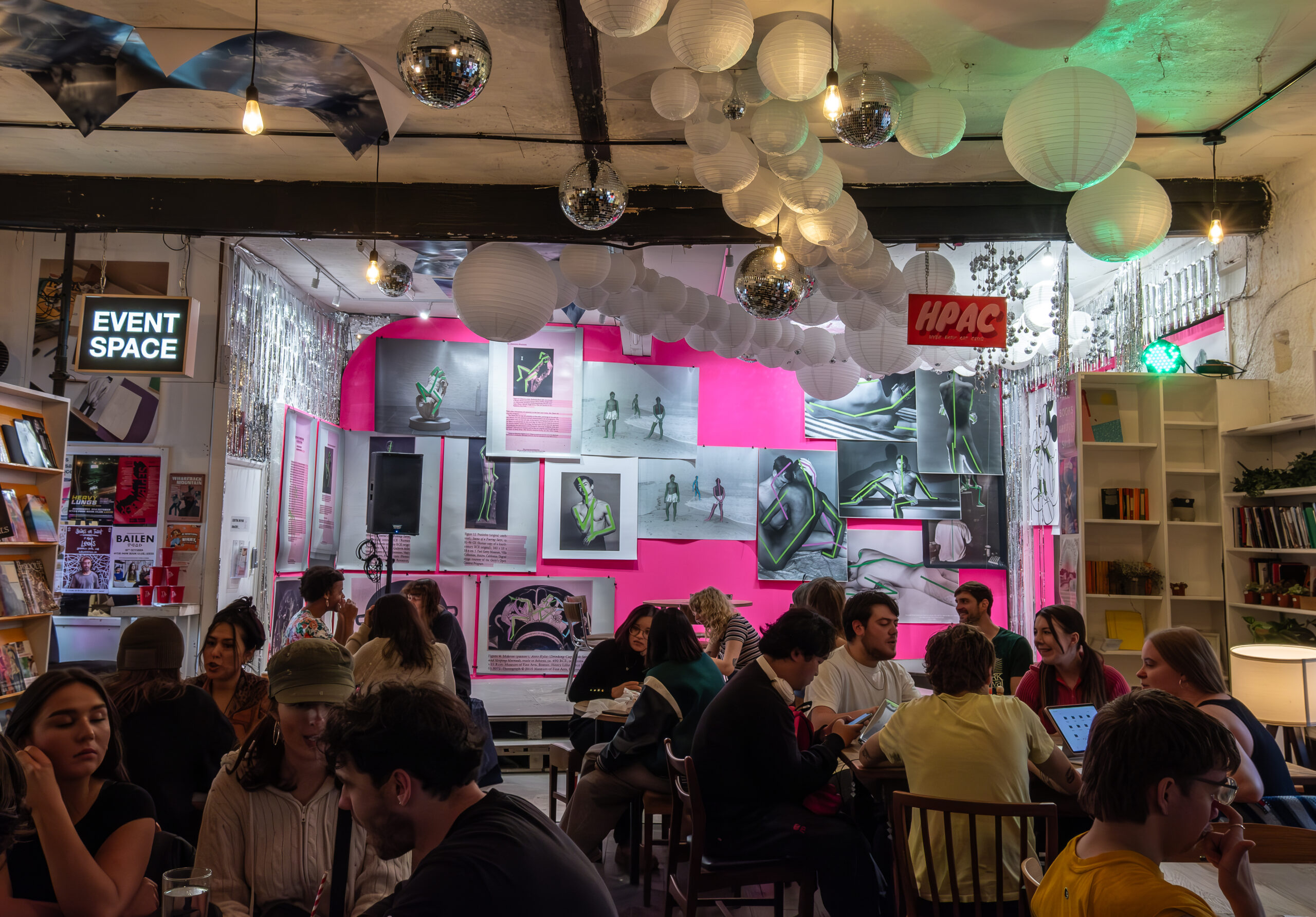
“Look for the broken lines”
A message from Mathew’s friend when asked how to find other queer people. This idea is the message of the exhibition – in neon, of course. Lining the bar were photographs of homoerotic men, pop culture icons and sex symbols, from James Dean to Mickey Mouse. Classical Greek art, all with overlaying fluorescent green linework, was exhibited in the venue. The lines map the queerness shown in the images, through the way the models are posing, their connection and relationship to other models, as well as the body language of the men, and the way they carry themselves. The art is subtle, yet striking. But I wonder how clear the message of the art is without understanding this context.
Before my conversation with Matthews, I was confused and the exhibition didn’t make sense to me. However, I want to stress that this exhibition was not purposefully made for me and other heterosexual, cisgender people. Therefore, it may not resonate with some audiences as deeply. Yet to others, it will make them feel at home, understood, and seen. The art may speak to queer people in a way it didn’t speak to me.
This is why queer art is so important and should be celebrated.
In the corner lies bricks in reference to Marsha P. Johnson. A trans black woman and activist, her role was influential in the Stonewall uprising of 1969 without whom there would be no Pride.
Downstairs in the basement, the motif of the lines of movement continues. This time, not only in green but orange, pink, and blue as well. Walking down those steps to the basement, illuminated by a neon pink Nasty Boys sign was like entering Matthews’ mind. Audiences are fully immersed in his vision of the world and experiences, grateful to be privy to such a personal and intimate exhibition.
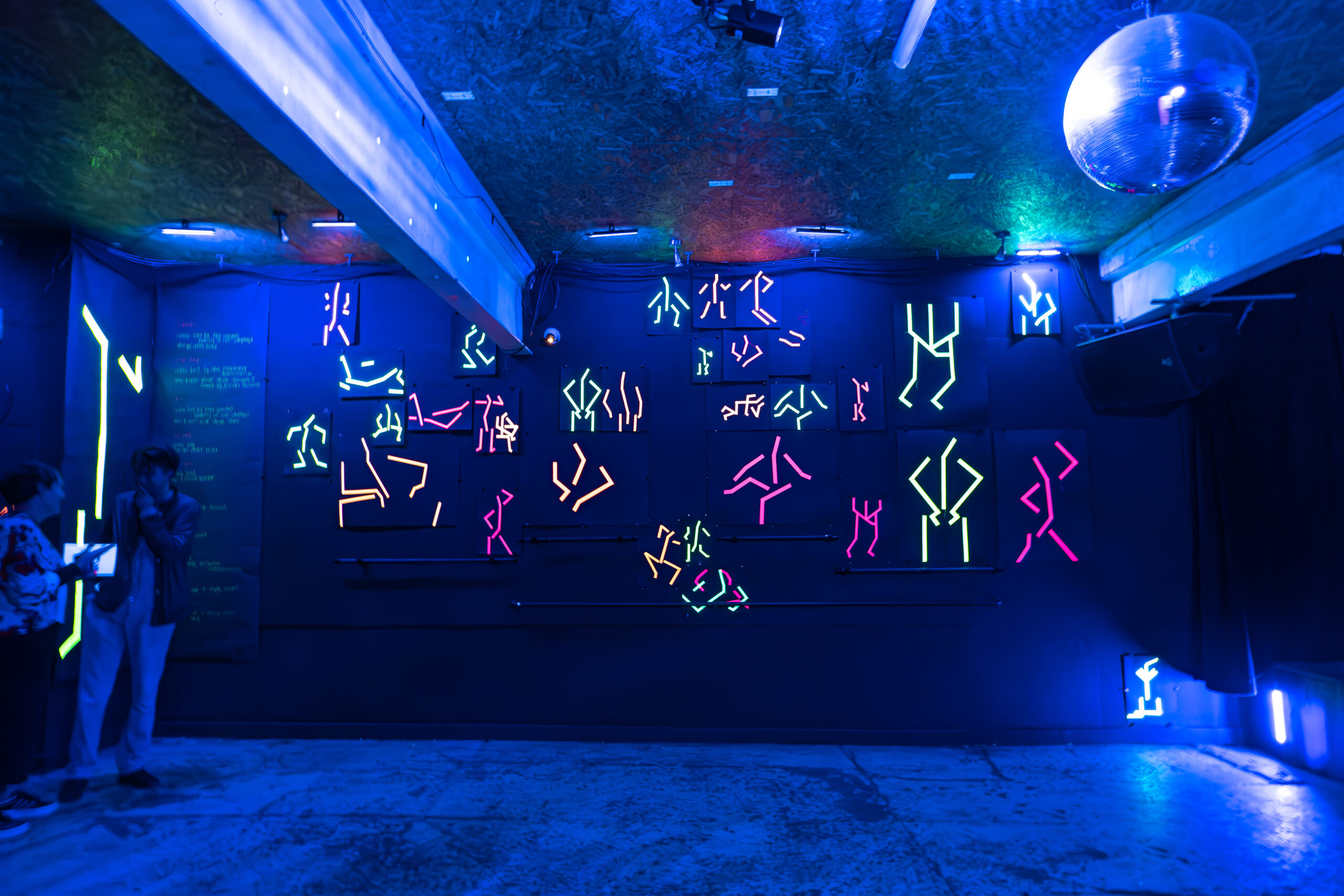
“Reclaiming the keg party”
The event was marketed as a queer kegger – to finally throw the LGBTQ+ community keg party. Something many have excluded from their entire lives including Matthews when studying in New York. Straight out of Diary of a Wimpy Kid: Rodrick Rules, the classic red cup (with the lines motif, obviously) is dotted around both the bar upstairs and the drinks table downstairs. Nasty Boys is a house party with a queer twist, giving the community the opportunity to experience what they never felt safe in. Personally, I am so proud that it was Leeds and HPBC that was chosen as the venue.
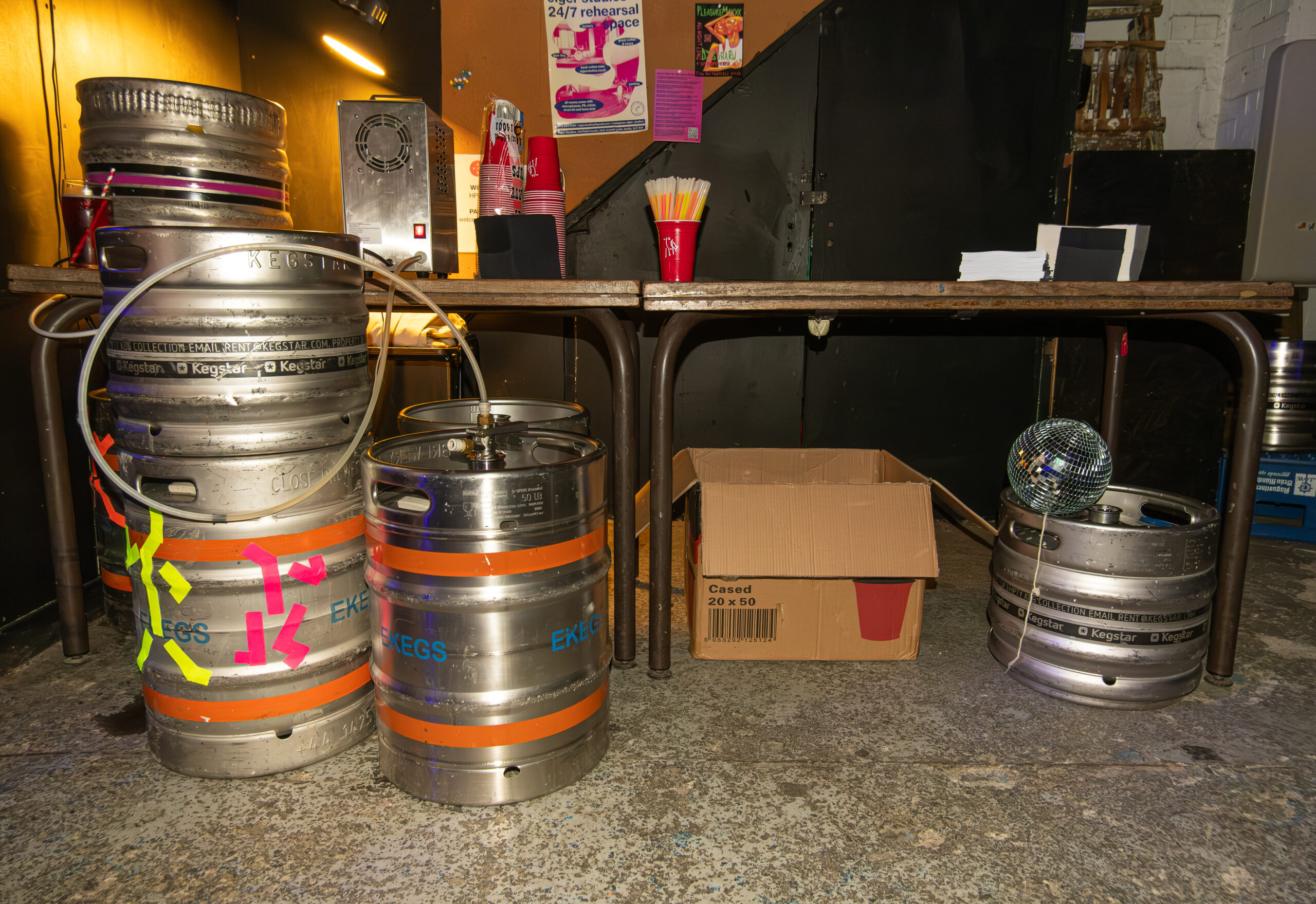
“The prostitution of the dancer’s body”
Dancing only in a dressing gown to music blasting through his headphones, a dancer greeted every pub-goer that entered HPBC with a simple “hey”. This set the energy expected of the event, but also its attendees. Despite historically being a person only able to dance with such abandon and freedom in the bathroom mirror, I felt energised by his energy and confident through his confidence. In the basement was another dancer, but he was denied the comfort of a dressing gown. Instead, they were semi-naked bar some budgie smugglers and, say it with me, neon lines covering his body. It was beautiful to see the mapping of queerness on a man in front of me, bringing integral cohesion to the exhibition.
While speaking to Matthews, he explained the dancers exemplified the prostitution of the dancer’s body. Inspiration was drawn from Ted Shawn who placed members of his dance company in the lobby of the theatre they were performing in, only wearing dressing gowns. Showcasing his beautiful male performers, wealthy women showered the dancers with compliments and, more notably, money. This was an inspired decision by Mathews. The dancers not only welcomed attendees but continued the flow of neon line artwork. But they communicated a powerful message about how dancers and artists exhibit themselves for money – a truth everyone must know.
Matthews decided to collaborate with Leeds artists and Leeds artists only, claiming “I didn’t want it to just be artists from London”. As a born and raised Leeds resident, I welcomed Mathews admission as the only non-Leeds based artist exhibited. From the dancer Hey Boo, to DJs such as Billy2Chips and Benny Subaru, all the artists collaborated with are based in Leeds and are no strangers to the city’s music and arts scene.
Matthews was in collaboration with Hyde Park Arts Club for a year. A year well spent. Leeds is so grateful that visual artist and choreographer Christopher Matthews decided on HPBC to be the home for his Nasty Boys exhibition and launch event. It gave the students of Hyde Park, most importantly queer students, the chance to let their hair down and dance the night away in a place that is inclusive, fun, and above all, safe.
